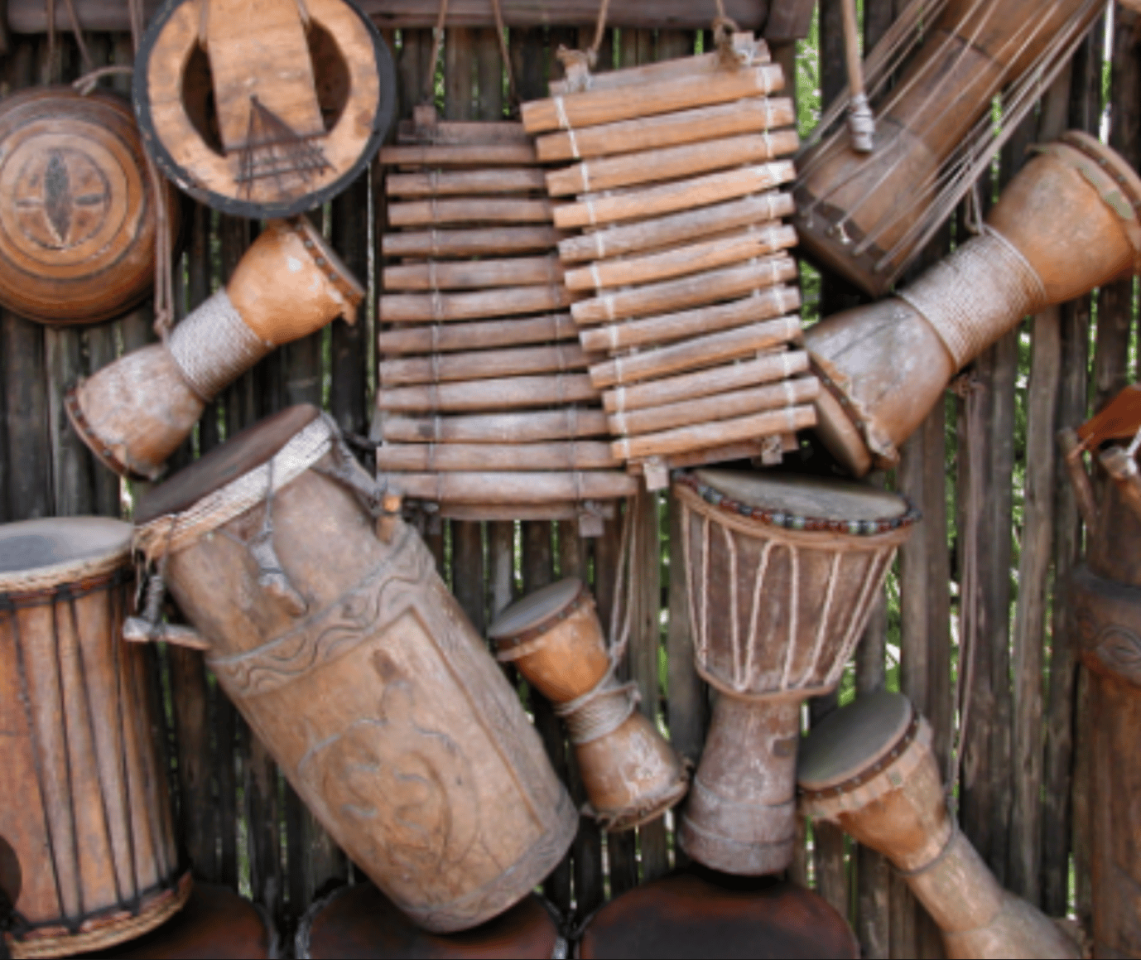African musical instruments: all you need to know
African Musical Instruments: As varied as the continent itself are the musical instruments of Africa. Africa is home to a wide variety of musical instruments, such as gongs with slits and xylophones.

Other sorts of harps and harp-like instruments, like the Kora and the ngoni, as well as fiddles, numerous varieties of xylophones and lamellophones, such as the mbira, and various types of wind instruments, such as flutes and trumpets, are among the musical instruments used throughout Africa. The lute-like oud and Ngoni are employed alongside string instruments in some regions as musical accompaniment.
Since many of the languages spoken in Africa have tones, some local cultures have a strong bond between language and music. These particular groups also incorporate vocal noises and body movements into their music. The melodic patterns in singing are sometimes limited by the tonal pattern or the text. On the other hand, a native speaker of a language can frequently recognize a text or texts in instrumental music. This result also serves as the foundation for drum languages.
Here, we quickly examine a few African musical instruments, many of which you have probably never seen before.
Balafon
A xylophone and a balafon are comparable instruments. It is a percussion instrument that is used in Burkina Faso, Ghana, Mali, and the Ivory Coast. Large gourds are covered with wooden planks that are loosely linked by a string.
Udu
The udu is a type of drum that is primarily used in Nigeria and means “vessel” in the Igbo language. Igbo women typically played the udu during ceremonies. The udu, in contrast to most percussion instruments, is made of clay rather than wood.
Gumba/Gumbe
Africans who were held as slaves in the Caribbean produced the gumba frame drum, also known as the square drum, many years ago. This African instrument is well-liked in Sierra Leone (connected with the Krio community, introduced to Sierra Leone by the Jamaican Maroon settlers), French Guiana, Mali, Jamaica, and Mali. There is still “Gumbe music” and dancing in certain other nations. The actual instrument is small, with a square frame that goatskin is firmly drawn around.
Algaita
This double-reed wind instrument is popular among Nigeria’s Hausa and Kanuri ethnic groups. It is found in West Africa. The Algaita resembles a recorder but has four finger holes and a wider opening at the base.
Marimba
A xylophone in essence, the marimba is thought to have originated in Zimbabwe. Small planks of wood are placed on a wooden box and struck with a mallet to create the sound. Most of East and Central Africa is where you can find the marimba.
Mbira
The 1,300-year-old Mbira Dza Vadzimu, sometimes known as the “African thumb piano,” is a traditional instrument of the Shona people of Zimbabwe. It has two rows of staggered metal tines. The tines are fastened to a hardwood board that normally has a resonator installed. Plucking these pliable metal strips produces sound. The likembe and the kisanji are two examples of comparable instruments, and thumb pianos are not just found on the continent, despite the fact that they differ in material, form, and playing technique.
Shekere
A percussion instrument from West Africa is called the shekere. In the shekere, a dried gourd is encircled by a net made of finely woven beads. The gourd’s shape determines what sound it makes. It can be shaken or slammed against hands to produce sound.
Djembe
A goblet-shaped drum called a djembe is common in Central and West Africa. It is constructed by stretching goatskin or another type of animal leather over a piece of carved hardwood (the body of the djembe). This African musical instrument, which is often solely performed by men, is incredibly versatile and produces a wide range of sounds.
Talking Drum
The talking drum is a common instrument in West African nations and is arguably the most well-known African musical instrument. The term “talking drum” refers to a drum with an hourglass shape whose pitch can be changed to mimic the prosody (rhythmic patterns) and tonality of human speech.
Kora
The kora, arguably the most well-known stringed instrument, is built similarly to a guitar. There are 21 threads attached to a gourd that is coated in fur. In Senegal, Ivory Coast, Gambia, Burkina Faso, Benin, and Mali, the kora is well-liked. Gambian Sona Jobarteh, a multi-instrumentalist and composer who was born into one of the five main kora-playing griot families from West Africa, is arguably the most well-known kora player in the UK and undoubtedly the most well-known female professional kora musician. Jobarteh is the cousin of renowned kora player Toumani Diabate and the sister of renowned diaspora kora player Tunde Jegede, who first taught her how to play the instrument.
Kalimba
The kalimba, which is frequently mistaken for an mbira, is made up of metal strips that are arranged in different lengths on a wooden resonator. The kalimba and mbira differ significantly in that the former has a single row of keys while the latter has a double row. The kalimba, as opposed to the mbira, also has a seven-note diatonic scale that is common in Western music. Plucking the metal strip ends on the kalimba produces sound. Primarily found in West and Central Africa, the kalimba.
Article Credit: Gift Adene/Kemi Filani News







